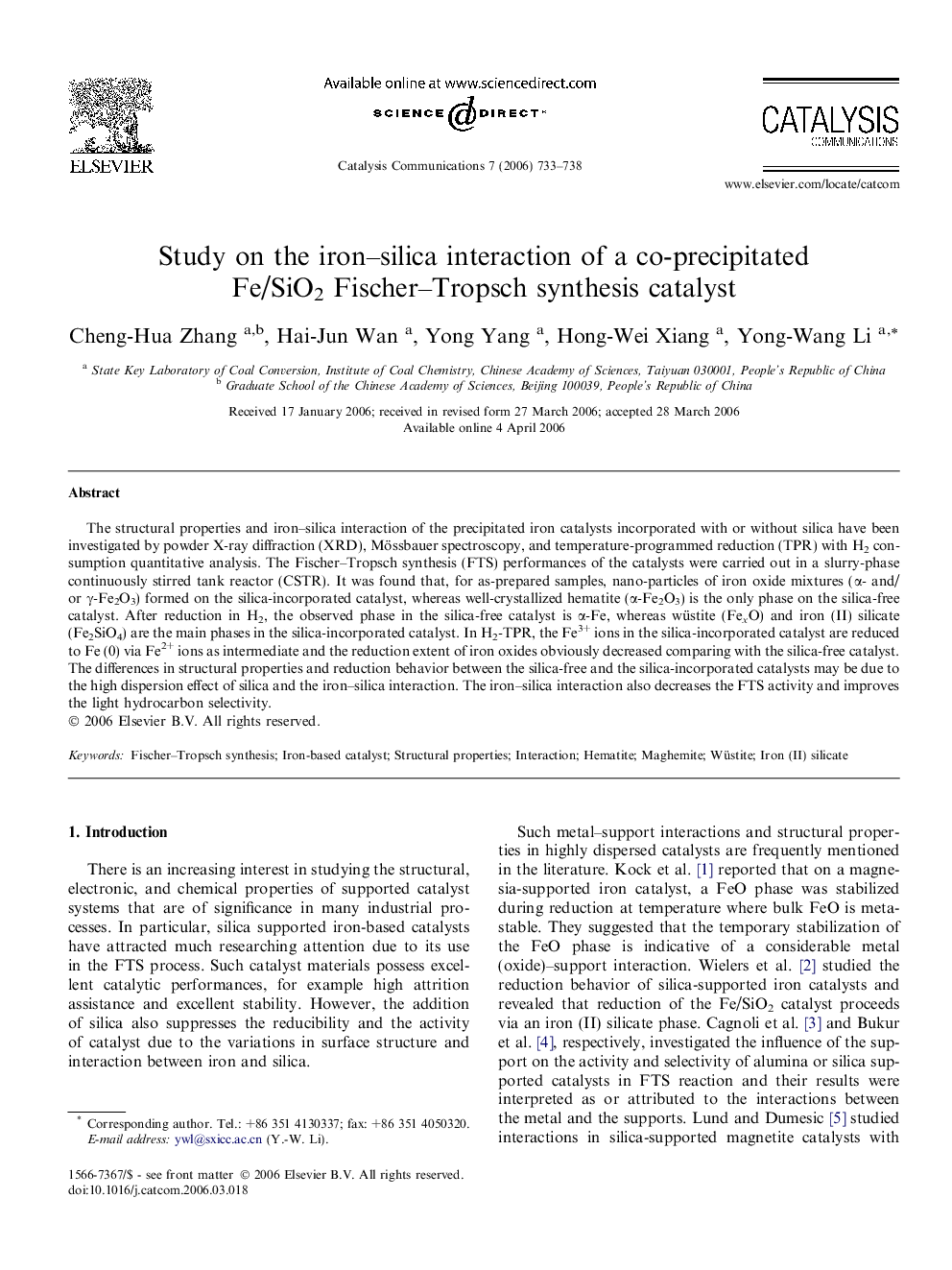| Article ID | Journal | Published Year | Pages | File Type |
|---|---|---|---|---|
| 52646 | Catalysis Communications | 2006 | 6 Pages |
The structural properties and iron–silica interaction of the precipitated iron catalysts incorporated with or without silica have been investigated by powder X-ray diffraction (XRD), Mössbauer spectroscopy, and temperature-programmed reduction (TPR) with H2 consumption quantitative analysis. The Fischer–Tropsch synthesis (FTS) performances of the catalysts were carried out in a slurry-phase continuously stirred tank reactor (CSTR). It was found that, for as-prepared samples, nano-particles of iron oxide mixtures (α- and/or γ-Fe2O3) formed on the silica-incorporated catalyst, whereas well-crystallized hematite (α-Fe2O3) is the only phase on the silica-free catalyst. After reduction in H2, the observed phase in the silica-free catalyst is α-Fe, whereas wüstite (FexO) and iron (II) silicate (Fe2SiO4) are the main phases in the silica-incorporated catalyst. In H2-TPR, the Fe3+ ions in the silica-incorporated catalyst are reduced to Fe (0) via Fe2+ ions as intermediate and the reduction extent of iron oxides obviously decreased comparing with the silica-free catalyst. The differences in structural properties and reduction behavior between the silica-free and the silica-incorporated catalysts may be due to the high dispersion effect of silica and the iron–silica interaction. The iron–silica interaction also decreases the FTS activity and improves the light hydrocarbon selectivity.
